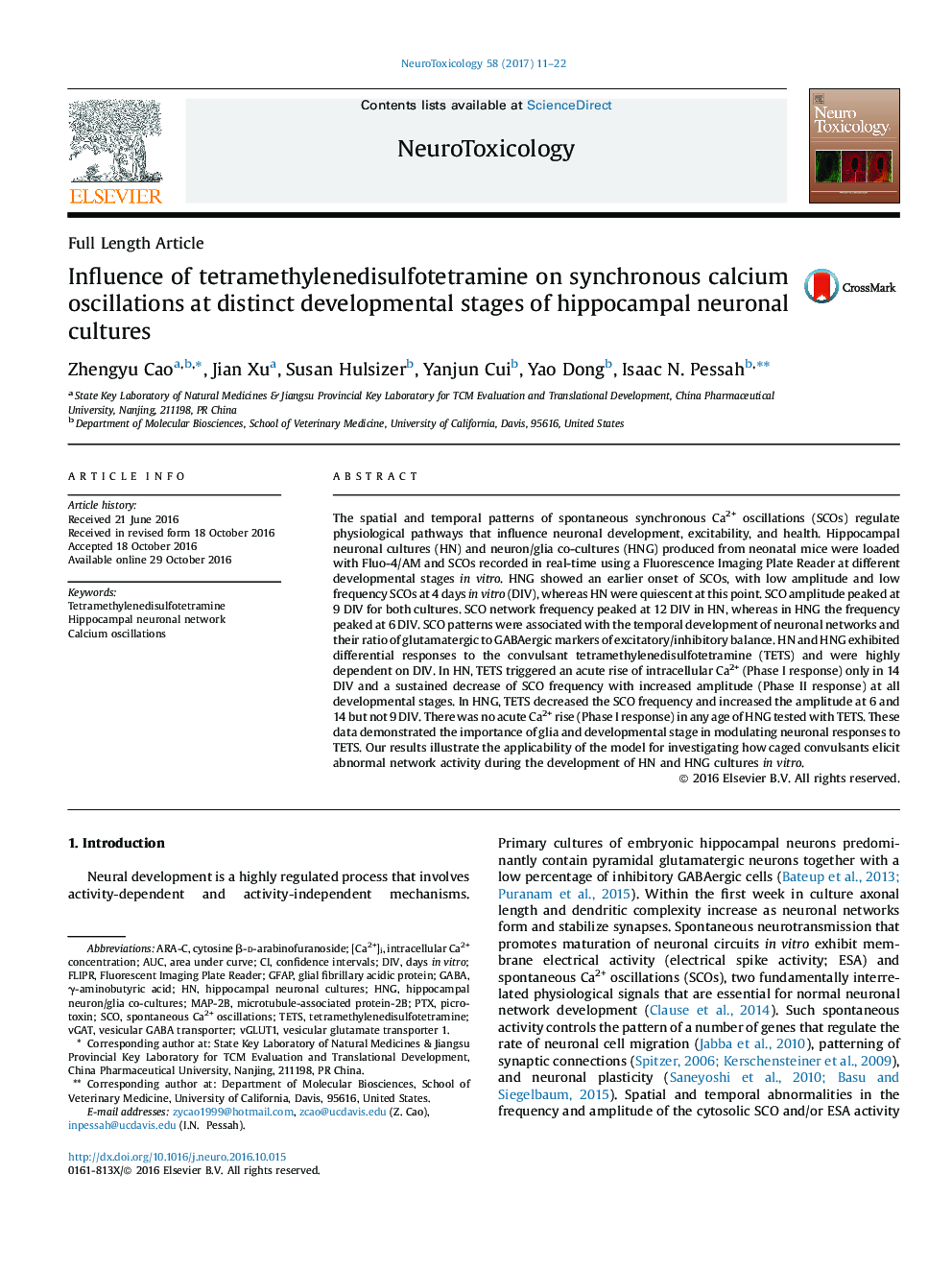| کد مقاله | کد نشریه | سال انتشار | مقاله انگلیسی | نسخه تمام متن |
|---|---|---|---|---|
| 5560860 | 1562036 | 2017 | 12 صفحه PDF | دانلود رایگان |
- Hippocampal neuronal cultures (HN) and neuron/glia co-cultures (HNG) form networks.
- HN and HNA networks show spontaneous synchronous Ca2+oscillations (SCO).
- HN and HNG display distinct SCO patterns during development.
- The developmental patterns of SCO in HN and HNG may associated with excitatory/inhibitory balance.
- HN and HNG exhibit differential responses to TETS that are dependent on developmental stage.
The spatial and temporal patterns of spontaneous synchronous Ca2+ oscillations (SCOs) regulate physiological pathways that influence neuronal development, excitability, and health. Hippocampal neuronal cultures (HN) and neuron/glia co-cultures (HNG) produced from neonatal mice were loaded with Fluo-4/AM and SCOs recorded in real-time using a Fluorescence Imaging Plate Reader at different developmental stages in vitro. HNG showed an earlier onset of SCOs, with low amplitude and low frequency SCOs at 4Â days in vitro (DIV), whereas HN were quiescent at this point. SCO amplitude peaked at 9 DIV for both cultures. SCO network frequency peaked at 12 DIV in HN, whereas in HNG the frequency peaked at 6 DIV. SCO patterns were associated with the temporal development of neuronal networks and their ratio of glutamatergic to GABAergic markers of excitatory/inhibitory balance. HN and HNG exhibited differential responses to the convulsant tetramethylenedisulfotetramine (TETS) and were highly dependent on DIV. In HN, TETS triggered an acute rise of intracellular Ca2+ (Phase I response) only in 14 DIV and a sustained decrease of SCO frequency with increased amplitude (Phase II response) at all developmental stages. In HNG, TETS decreased the SCO frequency and increased the amplitude at 6 and 14 but not 9 DIV. There was no acute Ca2+ rise (Phase I response) in any age of HNG tested with TETS. These data demonstrated the importance of glia and developmental stage in modulating neuronal responses to TETS. Our results illustrate the applicability of the model for investigating how caged convulsants elicit abnormal network activity during the development of HN and HNG cultures in vitro.
Journal: NeuroToxicology - Volume 58, January 2017, Pages 11-22
